Among the most interesting recent acquisitions in the catalog of Lavinia Fontana (Bologna, 1552 - Rome, 1614) is a singular work with a unique iconography: Mars and Venus, a work owned by the Fundación Casa de Alba and preserved in Madrid, at the Liria Palace. The protagonists, the god of war and the goddess of love, are depicted seated on top of a four-poster bed, with red silk curtains opening like a curtain, and with the god Love, in the usual iconography of the winged cherub with bow, sleeping on top of the pillow. On the ground can be seen a pitcher, Venus’ slippers, and Mars’ shield and sword. However, what makes the painting unique and unprecedented (at least as far as we are currently aware) is the gesture of Mars, caught groping Venus’ left buttock. He, wearing a soldier’s helmet from the painter’s time, looks her in the face, while she, who does not seem disturbed by the gesture, instead looks toward the viewer, holding a daffodil in her right hand. They are both naked: he has only his pants left on, while she is wearing nothing but a pearl necklace and a pair of gold and rock crystal earrings.
Art historian Enrico Maria Dal Pozzolo deserves the credit for (very convincingly) attributing the painting to Lavinia Fontana and for being the first to try to shed light on the meaning of an unusual iconography: he has dedicated a volume to the painting, Un apice erotico di Lavinia Fontana, published by ZeL Edizioni (116 pages, 20 euros, ISBN 9788887186260). The painting, as mentioned, is in the collections of the Dukes of Alba, the first nucleus of which was established towards the end of the 16th century by Fernando Álvarez de Toledo y Pimentel, known as “el Gran Duque de Alba,” one of the most eminent figures in Spain at the time, who held practically all the highest state offices: he was viceroy of Naples, of Portugal, governor of Milan, and of the Netherlands. However, the entry of Mars and Venus into the collection is not due to him: it entered it in 1816, when it was purchased by Carlos Miguel Felipe Maria Fitz-James Stuart, 14th Duke of Alba, who at that time, in his early twenties, was making his Grand Tour of Italy. The work, at the time believed to be by Paolo Veronese, was purchased on Feb. 27 in Naples and sent shortly thereafter to Madrid (in 1911 it underwent a change in attribution: no longer by Paolo, but by his son, Carletto Caliari). Only recently, however, has the heritage of the Alba house been made known to the public with a series of exhibitions and publications.
The attribution to Lavinia Fontana dates back to 2007-2008, when Dal Pozzolo published, in the scholarly journal Studi tizianeschi, an article on Titian’sLast Supper and other paintings preserved in Palazzo Liria. On that occasion, the scholar juxtaposed the Madrid painting with a Venus and Cupid from a private Venetian collection, signed by Lavinia Fontana and dated 1585, with the counterpart work signed and dated 1592 and kept at the Musée des Beaux-Arts in Rouen, with an oil-on-copper portrait (perhaps of a courtesan) now in a private collection in Cento, and with the celebrated Minerva in the act of adorning herself from the Galleria Borghese in Rome (a work dated 1613). As for the link with the latter canvas in particular, which is later than the other two, “if it is true that in the general setting and even in specific details (such as the shield placed in the lower left corner),” Dal Pozzolo wrote, "the relationship with the Roman canvas is quite evident, it nevertheless seems equally clear that the stylistic incidence indicates a contiguity with the two dated draftings of Venus and Cupid, thus suggesting that we are around 1590 or thereabouts."
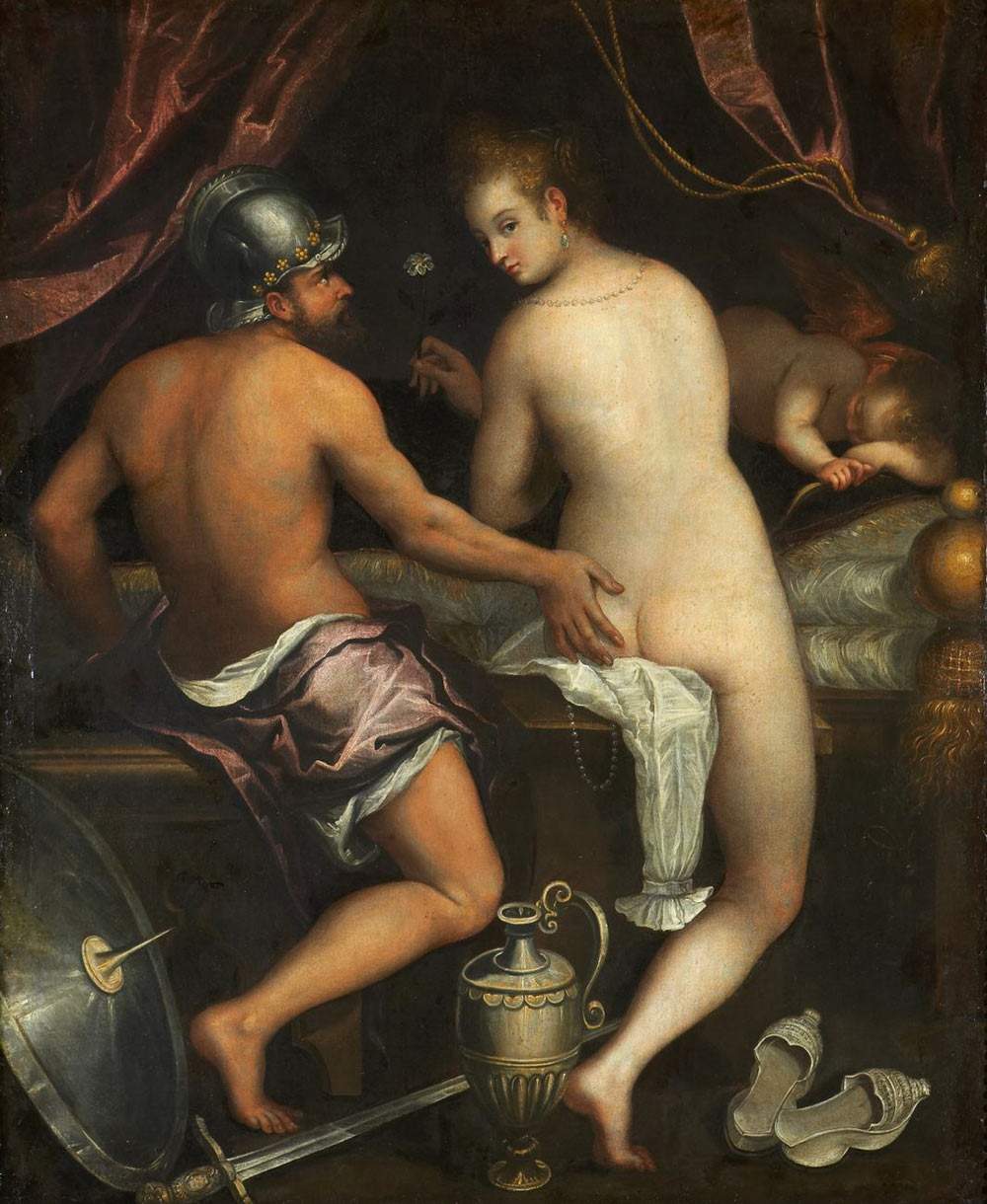
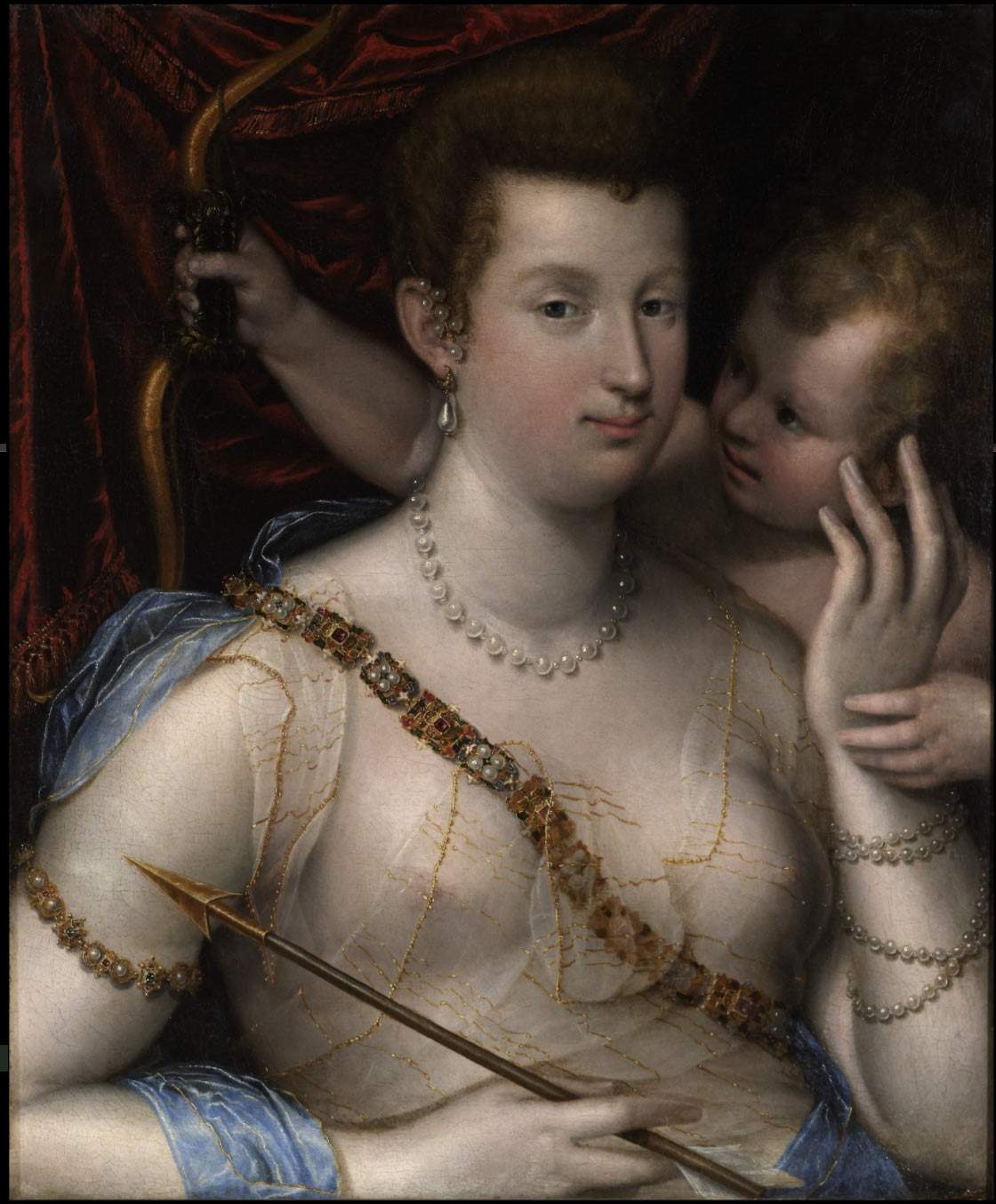
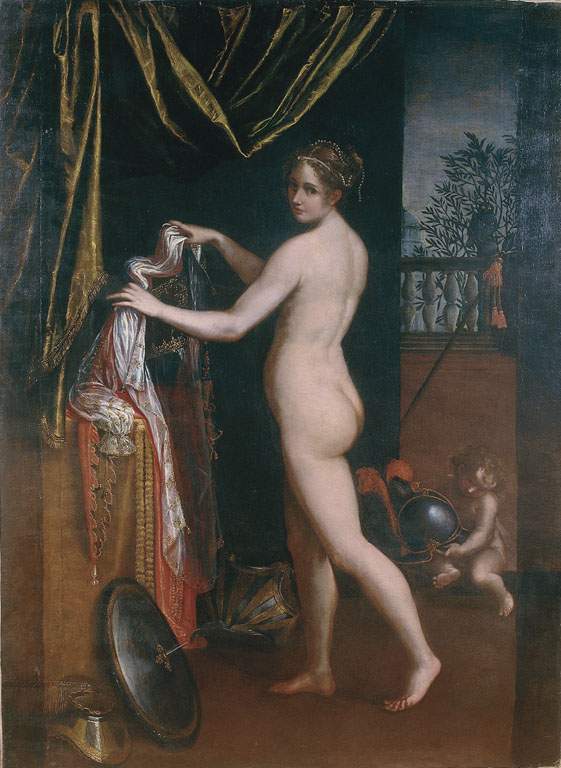
The iconography of Mars and Venus, with the god so blatantly and so eagerly touching Venus’ buttocks, is unique. There are no other similar instances preceding Lavinia Fontana’s painting, unless one wishes to call into question a work of an entirely different tenor, a sculpture by the German Conrad Meit (Worms, 1480 - Antwerp, 1551), where the two deities, posed in classical poses, bring their hands close to each other (Mars, seated in a regal pose, is positioned so that his hand touches Venus’s buttocks, while she is turned so that she can direct her hand toward the god’s genitals). Not that Meit’s small bronze group lacks an undeniable erotic streak. "In his Mars and Venus of c. 1515-1520,“ wrote scholar Stephanie Schrader, ”Meit places Mars so that he touches Venus’s buttocks, and her hand grazes his thigh. Meit accentuates the sense that the two figures are approaching each other by depicting them both with one foot raised. Their active gestures and juxtaposition animate the couple and increase their erotic charge." Totally missing from Meit’s work, however, is the sense of complicity, concupiscence and carnality that animates Lavinia Fontana’s painting instead. In Meit’s sculpture, Mars’ gesture is a delicate, almost hesitant caress. In Lavinia Fontana, on the other hand, we witness a gesture that is much more charged, self-conscious, transgressive, even vulgar, if you will. How can such a painting be contextualized in late 16th-century art and in the production of a woman?
To arrive at an understanding of the painting’s motives, it is necessary to be clear about the cultural temperament that could produce it. Dal Pozzolo, in the book, names several reasons. The first is the discovery of the Venus Callipigia now in the National Archaeological Museum in Naples, found in the mid-17th century and first described in 1556 by the Bolognese scientist Ulisse Aldrovandi (Bologna, 1522 - 1605), who saw it in the collections of the Farnese family. The Venus “with the beautiful buttocks” (this is the exact translation of the Greek “Callipigia”) had a great fortune in the literary and artistic circles of the time. Not only: “the inexhaustible inquiry into the beauty and harmony of body parts conducted in the classical age,” writes Dal Pozzolo, entailed during the Renaissance “also an aesthetic reflection” on the lower back, a part of the body not separable from the others “and which indeed , in spite of the low functions assigned to it by nature, was somehow focal” (think, for example, of Raphael’s Three Graces or Correggio’s Jupiter and Io, an artist moreover from Emilia like Lavinia, but countless are the examples, often arriving before the discovery of the classical statue now in Naples: the earliest example is traced back to Jacopo de’ Barbari’sAllegory of 1498-1500, though only a Venus in which the main point of view is, precisely, the buttocks can be said to be “Callipigia”). Consequential reason then, the Venetian scholar explains, is “the legitimacy of the depiction of female nudity in 360 degrees,” and consequently the legitimacy of the depiction of the buttocks, the most spectacular example of which is probably Jacopo Palma the Elder’s Nuda di spalle once in the collection of Christina of Sweden and later in that of Duke Philip of Orleans, and now lost and known only from engravings.

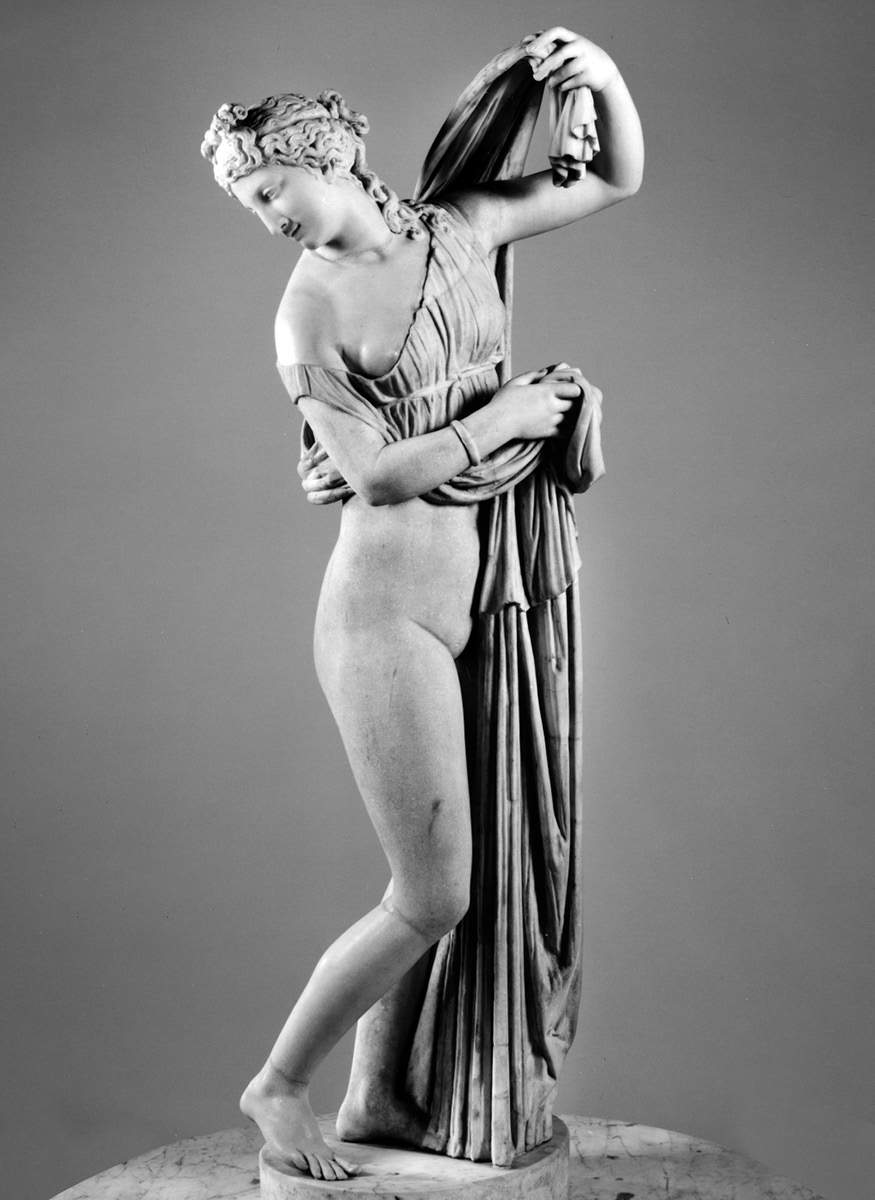
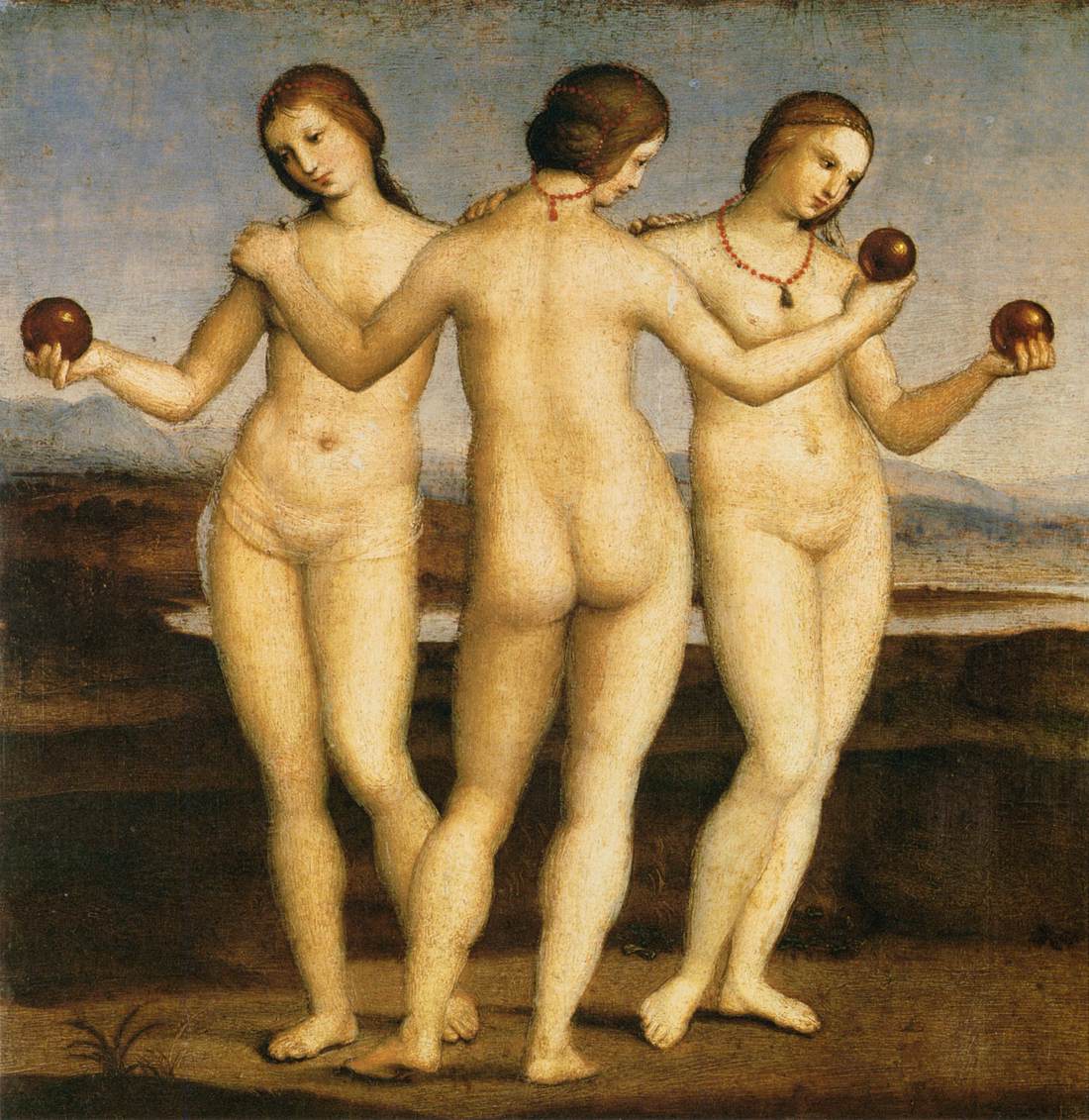


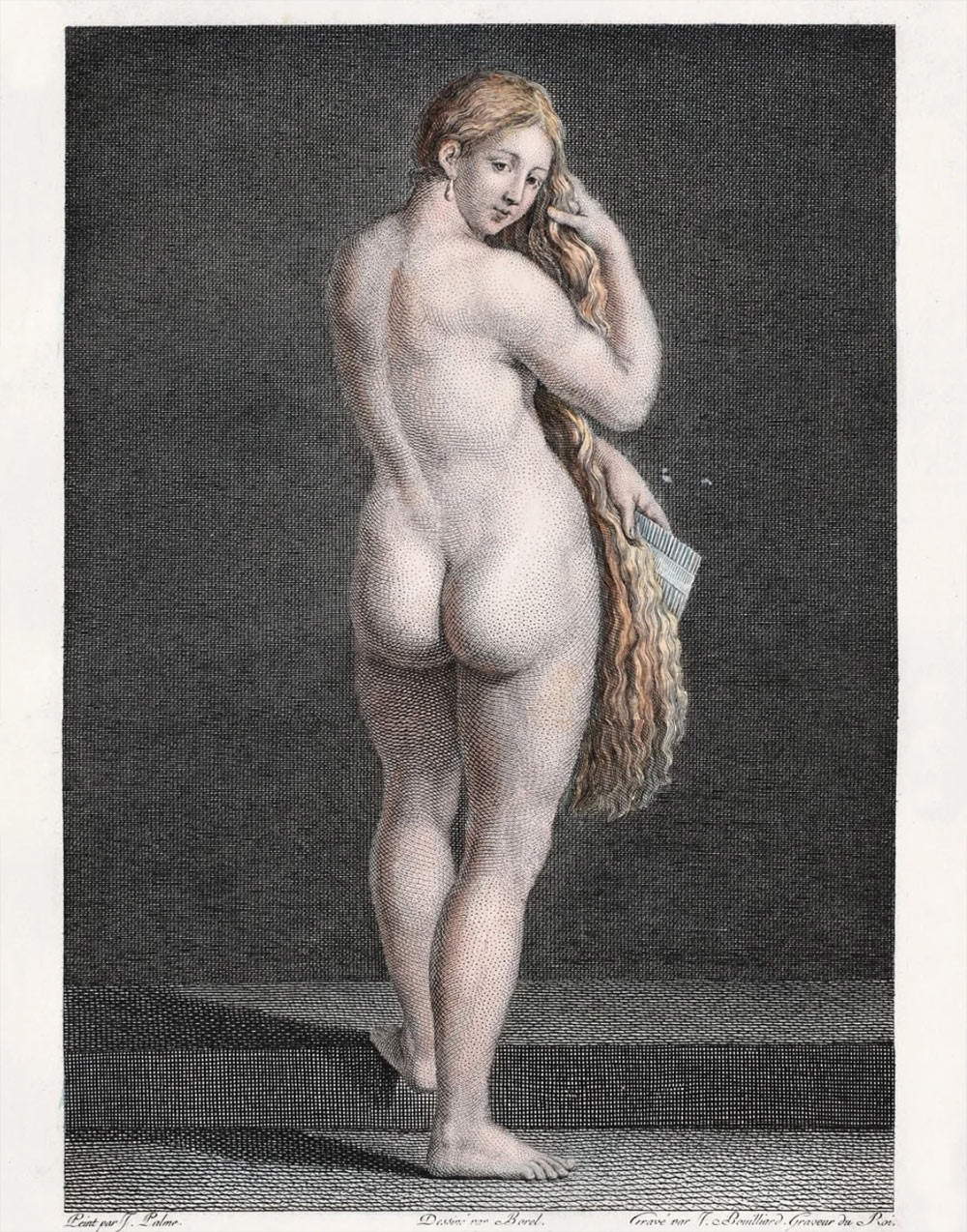
And in any case, regardless of the more or less copious presence of similar nudes in the art of the time (actually not so abundant), it is possible to assume that Lavinia was well acquainted with the Venus of Naples, since her father, the great painter Prospero Fontana (Bologna, 1512 - 1597), had close relations with the Farnese family at least from the 1540s onward. And even closer relations were those entertained with the family by Titian Vecellio (according to Dal Pozzolo, the Venus and Adonis, a very famous Titian canvas, is clear evidence that after his encounter with the Callipigia even the Cadorino had to wonder about the potential of the buttocks, which from the late 1540s onwards was painted by him with an insistence that was at least suspicious). Thus, writes Dal Pozzolo, "introduced in two phases and in two different ways by the Titianesqueauctoritas, [...] the less usual female side was the protagonist of a new season, extremely free, which produced a large number of variations on the theme. While obviously privileging the figure of Venus, other protagonists of mythology were also involved, starting with Danae." A further reason, which could hold the whole scaffolding together, is the historical precedents: in the Veneto there was a well-established and conspicuous production of nude Venuses (to which a substantial in-depth study has also been devoted on these pages), which was certainly well known to Lavinia Fontana.
Finally, a further development of the iconography of Venus seen from behind arrives with Paolo Veronese, who responds to Titianesque cues with a pair of paintings, the first of which is preserved at the Joslyn Art Museum in Omaha in the United States, where we see the goddess, from behind, looking into the mirror held by Cupid, with her robe descending down her back to reveal the upper part of her lower back, while the second is a canvas in a private collection (currently untraceable: a workshop version is preserved in the Royal Collection), where the goddess figures in the same pose, and with still Cupid holding the mirror, but this time the god Mars appears in the scene, holding her by the shoulder, hinting that he is about to join her. Here then is the most direct relative of Lavinia Fontana’s Mars and Venus. “These impertinent little scenes,” writes Dal Pozzolo, “play with the classical appeal to the Callipigia in an unexpected way, to win the amazement and smiles of the opera’s owner and his guests.” And, after Veronese’s work, “the next step is the gesture of Mars in the Alba canvas in Madrid.” Here, “we witness the exclamation point slam after a century of iconographic discussions and variations on the theme, in which the question was circled without ever stating it too explicitly. And it is, incredibly, the birth of a painter: the impeccable Lavinia Fontana.”
The commissioner of the work now in the Alba House collections evidently knew of Veronese’s work and asked Lavinia to try her hand at an even bolder subject. A patron probably from Bologna: Dal Pozzolo, in the book, advances the hypothesis that it was Jacopo Boncompagni (Bologna, 1548 - Sora, 1612) who commissioned Lavinia to execute the painting, given also the physical resemblance between the nobleman and the Mars depicted by Lavinia Fontana. The last aspect that needs to be clarified in order to provide a complete picture of the context in which the painting was born is, rightly so, the cultural climate from which it may have sprung, that of late 16th-century Bologna. A city that at the time was part of the Papal States, and therefore where licenses were less frequent than elsewhere, it did not, however, remain immune to the fascination of erotic painting, of which few but very significant examples are known (it will suffice to recall that Girolamo Siciolante’s Portrait of a Nude Woman, now in the Capitoline Museums, the first portrait of the period of a completely nude woman who was not a classical deity, seems to have been commissioned by Bologna). Artists in Bologna, for their very private patrons, tried their hand at declining all the possibilities of female eroticism (demand was particularly high), and Lavinia was certainly aware of this. To this should be added a further phenomenon, without which certain works (beginning with Lavinia Fontana’s own) could not be explained: “the taste for the adoption of a ’low’, scurrilous register, devoid of a sense of limits, which had spread in Italy and Europe from the 1920s, coinciding with the birth of Mannerist culture.” The 16th century, as attested by numerous studies and exhibitions, is the century in which pure and elevated love shifted to love consummated in the bedroom. One need only think of the work of Pietro Aretino. The temperament is well summarized by Niccolò Machiavelli in a letter sent on January 31, 1515, to Francesco Vettori: “whoever would see our letters, honored compatriot, and see the diversity of them, would be greatly astonished, because it would seem to him now that we were grave men, all turned to great things, and that in our breasts no thought could fall that did not have in itself honesty and greatness. Hence afterwards, turning paper, it would seem to him that we ourselves were lawless, inconstant, lascivious, turned to vain things. This way of proceeding, if it seems to some to be vituperative, to me it seems laudable, because we imitate nature, which is varied; et he who imitates that cannot be taken back.” Natural then that such a context would produce a work like Lavinia Fontana’s.



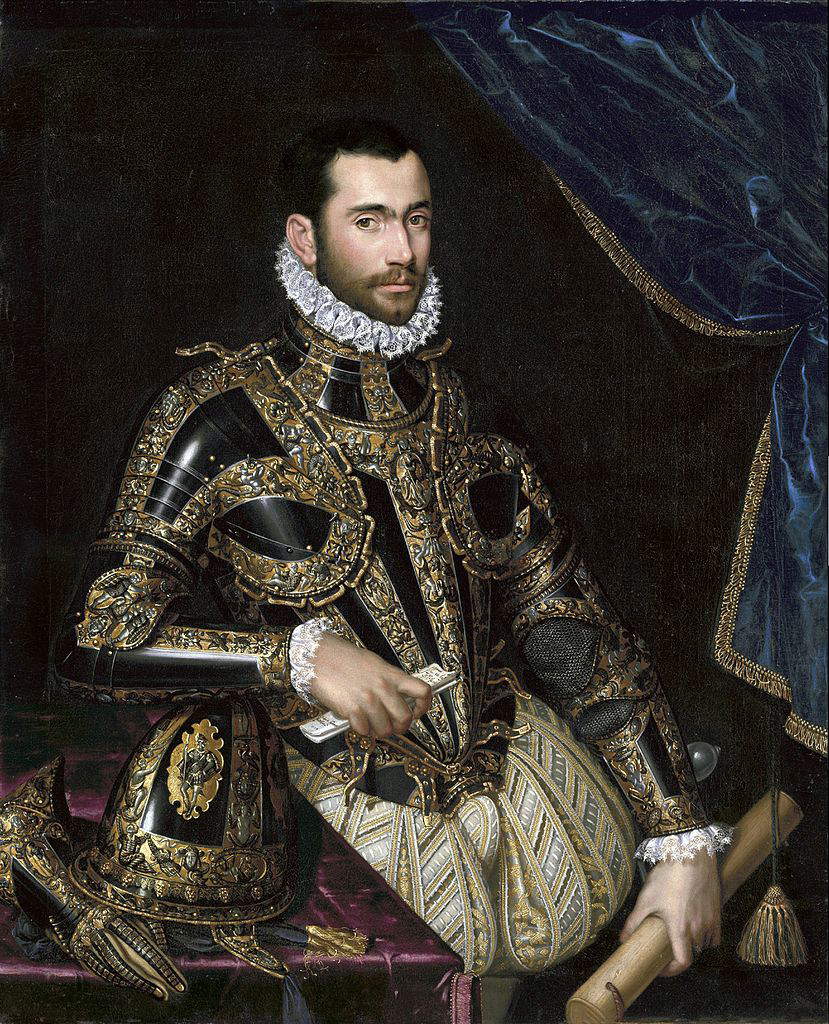

It therefore remains to be clarified what the meaning of the painting is. It could be quickly said: nothing more than a scene of preparations for an intercourse, but with also an additional level of reading that will be discussed at the end. Meanwhile, the painting should be read simply as the beginning of petting by the god of war in anticipation of full intercourse, of carnal union with Venus. To the sexual dimension of the scene alludes not only the touching of buttocks: references are to be grasped in other elements as well, such as the jug on the ground, a symbol of readiness for union (it is in fact open, without a cork), the pointed brooch of Mars’ shield pointing straight (or erect, one would say considering the situation) toward Venus’ buttocks, the pearls placed directly under the deretum perhaps ironically emphasizing the value and meanings attributed to that part of the body and in particular to the pleasure that can be derived from it (“prelate’s food” is defined as anal sex in Aretino’s Lustful Sonnets, or again “the most greedy fucking that pleased woman,” as it was considered a way to give oneself to pleasure while preserving virginity) and even slippers (because of their shape they were considered a symbol of the female organ).
Similar paintings were usually placed in bedrooms and had the function of exciting the fantasies of those who were intended to make use of the room and its furnishings. But they could also be unveiled to guests, who might also have laughed at the painting’s obvious burlesque aspects, beginning with Mars’ paraphernalia and its phallic symbolism, but perhaps the bystanders of the time might also have laughed when looking at the sagging shirt sleeve, perhaps foreshadowing a not-so-exciting performance by the god. In any case, on the occasion of the painting’s first Italian exhibition, for the exhibition L’ora dello spettacore. How Images Use Us, held in the summer of 2021 in Rome’s Palazzo Barberini, Pauline Lafille offered an effective summary of the painting’s primary purpose: "the right hand of Mars breaks dutifully with the erudite code of amorous signs, not infrequently abstractly symbolic, to give rise to a direct action that plays on the combination of desire and transgression. The saturation of the motifs that evoke touch (the rounding of the buttocks due to the position on the bed, the contact between the shirt and the flesh) excites the tactile desire for the Venus callipigia [...], which Mars’ attitude makes explicit: the warrior god’s touch, as sensual as it is brutal, builds into the story a mise en abyme of the faculty of love painting to act on the viewer’s senses. In turning away, less toward her lover than toward the viewer, Venus introduces an element of reflexive opacity into the work, testing the effect of her graces on the dual audience, inside and outside the painting. The most beautiful of goddesses, here, cleverly lets color oche observe her that her desire, far from being anonymously voyeuristic or discreet, is known and evident to all."
As anticipated, however, there is another level of interpretation, which revolves around the narcissus and was well pointed out by Enrico Maria Dal Pozzolo in the closing of Lavinia Fontana’s An Erotic Apex. The gesture of Venus, flaunting her narcissus, could be read as an act in opposition to the gesture of Mars. The narcissus is a decidedly unusual flower: a symbol of Venus is the rose, and in any case in paintings in which a lover, male or female, offered a flower, it was never a narcissus, which was instead a symbol of self-love and vanity, because of its mythological references (“cosa infelice et degna di riso quanto infelice et ridicolosa fu dai poeti finta la fola di Narciso,” wrote Cesare Ripa in his Iconologia published in 1593). Narcissus, in short, for the mentality of the time did not open to positive meanings. What is more, in the expanded edition of theIconologia, dating from 1618, the personification of stupidity is a woman holding a goat’s head and a narcissus. In short, according to Dal Pozzolo, Lavinia Fontana, with this additional and decidedly unusual insert, would have wanted, with a “very personal feminine scratch,” to label Mars as an obtuse egotist, as well as to provoke his patron and the relative himself, should he be led to “take this licentious ’invention’ of his too seriously.”
Warning: the translation into English of the original Italian article was created using automatic tools. We undertake to review all articles, but we do not guarantee the total absence of inaccuracies in the translation due to the program. You can find the original by clicking on the ITA button. If you find any mistake,please contact us.